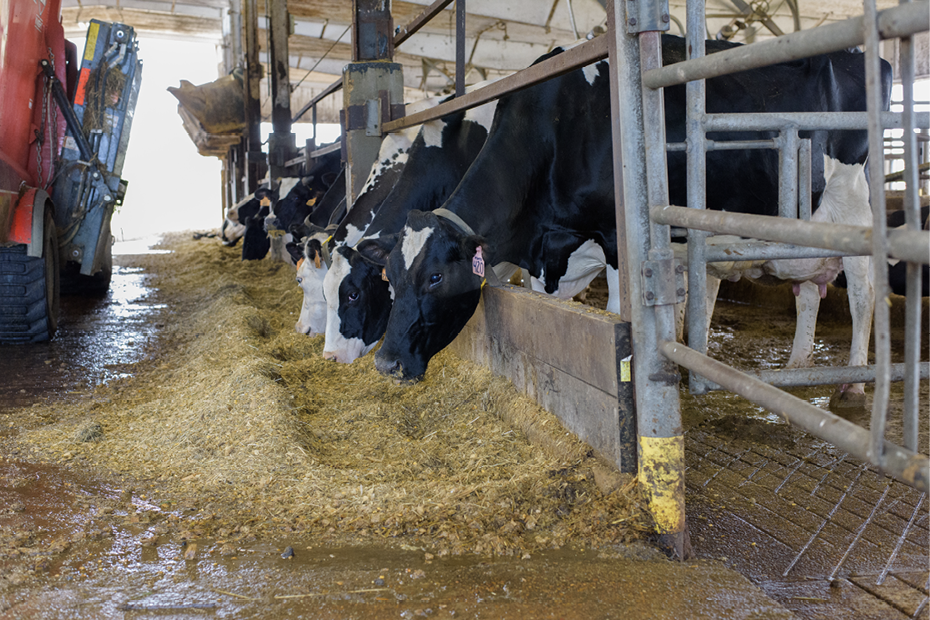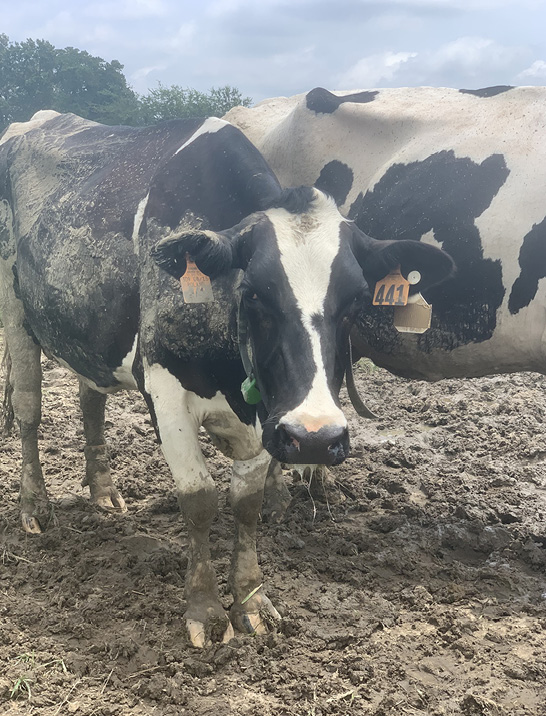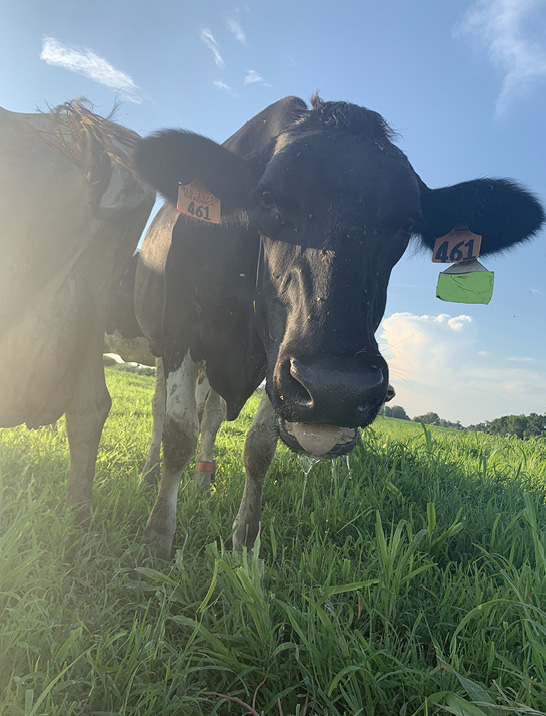Recognizing Heat Stress in Dairy Cattle: A Scoring System to Help Producers Assess Heat Stress
Heat stress can occur in both confinement and pasture-based dairy cattle housing systems. Providing appropriate cooling techniques (shade, fans, sprinklers, or combinations of these methods) can reduce the negative effects of heat stress and improve cow comfort. Being able to recognize and identify the signs of heat stress will help you to know when to implement these various cooling techniques.
Developing a scoring system to assess heat stress in dairy cattle is challenging because many factors can influence the heat stress response, such as age, breed, milk production, body condition, stage of lactation, pregnancy, previous exposure to heat stress conditions, type of hair coat, and hide and hair color. Observing cows and keeping detailed records of their physical and behavioral responses to the environment can help producers identify when their animals start experiencing signs of heat stress and give them time to implement cooling before major production loss occurs.
The Mississippi State University Heat Stress Scoring System was used for a heat stress research project that took place at the MSU Bearden Dairy Research Center in the summer of 2019. Scores range from 0 (no signs of heat stress) to 4 (extremely heat stressed/near death). On the next pages, you will find scores with descriptions of how cows may behave when experiencing that level of heat stress. The photo above the description shows how cows experiencing that level of heat stress may appear. Keep in mind that some cows will not display every sign listed but can still be categorized based on signs they are showing.
Respiration rate is used to determine the heat stress score. For more information, check out Extension Publication 3465 Recognizing Heat Stress in Dairy Cattle: How to Visually Record Respiration Rate.

MSU Heat Stress Scoring System
0 = Normal

- No signs of heat stress
- 59 breaths or less per minute
1 = Mild heat stress

Includes one or more of the following signs:
- elevated respiration rate (60 to 99 breaths per minute)
- restless
- increased time spent standing
- slight drooling (one string of drool hanging from mouth)
- animals may group together
2 = Moderate heat stress

Includes one or more of the following signs:
- elevated respiration rate (100 to 119 breaths per minute)
- excessive drooling or foaming (two strings of saliva hanging from mouth or foaming around mouth)
- mild or moderate depression
- lethargic; may look alert when approached
- head carriage lower than normal; returns to normal when approached
- most animals in area are standing
- animals may group together
3 = Severe heat stress

Includes one or more of the following signs:
- elevated respiration rate (120 breaths or more per minute)
- open-mouth breathing or panting with tongue out
- moderately to markedly increased abdominal effort (i.e., working hard to breathe)
- drooling (more than three strings of saliva hanging from mouth)
- lethargic; does not look more alert when approached
- low head carriage; does not return to normal when approached
4 = Extreme heat stress (near death)
No photo is available for this score because it was not observed during this study or otherwise.
- open-mouth breathing with tongue hanging out
- may not be drooling
- labored breathing and possibly decreased respiration rate
- push from flank when breathing
- head down
- very weak, if any movement (drags feet, sways, stumbles, may fall down)
- individual animals may be isolated from herd
- may also have signs described for scores 1, 2, or 3
Negative effects of heat stress include reduced milk production, decreased conception rate, increased somatic cell count, increased risk of abortion, and decreased cow comfort. To minimize these effects, use cow cooling techniques (shade, sprinklers, and fans) before cows begin experiencing even mild heat stress, at scores of 0 or 1. With regular monitoring of respiration rate and behavior, you will notice any physical sign or behavior change in your cows.
If a cow receives a heat stress score of 3 or 4, immediately intervene to alleviate the animal’s discomfort and make the effort to save her life. Move the cow to a cool, shaded area with easily accessible water and feed, and have her examined by a veterinarian.
References
Brown-Brandl, T.M., Eigenberg, R.E., Nienaber, J.A., and Hahn, G.L. (2005). Dynamic response indicators of heat stress in shaded and non-shaded feedlot cattle: Part 1. Analyses of indicators. Biosyst. Eng. 90, 451–462.
Mader, T.L., Davis, M.S., and Brown-Brandl, T. (2006). Environmental factors influencing heat stress in feedlot cattle. J. Anim. Sci. 84:712–719.
Tao, S., Orellana, R., Weng, X., Marins, T., Dahl, G., and Bernard, J. (2018). Symposium review: The influences of heat stress on bovine mammary gland function. J. Dairy Sci. 101(6): 5642–5654.
Tresoldi, G., Schütz, K.E., and Tucker, C.B. (2018). Cooling cows with sprinklers: Spray duration affects physiological responses to heat load. J. Dairy. Sci. 101(12): 11237–11246.
Woolums, A.R., Berghaus, R.D., Smith, D.R., Daly, R.F., Stokka, G.L., White, B.J., Avra, T., Daniel, A.T., and Jenerette, M. (2018). Case-control study to determine herd-level risk factors for bovine respiratory disease in nursing beef calves on cow-calf operations. JAVMA. 252(8): 989–994.
Publication 3464 (POD-03-24)
Reviewed by Amelia R. Woolums, DVM, PhD, Endowed Professor, Pathobiology and Population Medicine, College of Veterinary Medicine. Written by Carly A. Becker, former master’s student, Animal and Dairy Sciences, and Amanda E. Stone, PhD, former Assistant Professor, Animal and Dairy Sciences.
The Mississippi State University Extension Service is working to ensure all web content is accessible to all users. If you need assistance accessing any of our content, please email the webteam or call 662-325-2262.

